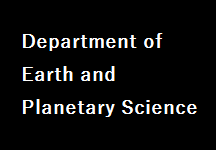






Atmospheric and Oceanic Science Group
Outline of Atmospheric and Oceanic Science Group
Our planet Earth is unique simply because it is covered by moisture evaporated from the ground and oceans. Since the oceans of this planet occupy more than 70% of the global surface, this planet is sometimes called an "aqua-planet". Water absorbs radiation from the Sun quite effectively and has a large specific heat; it releases/absorbs large latent heat by changing its phase. In addition, it is extremely solvent and fluid. It is all those characteristics that have introduced rich daily weather, seasonal changes and climate variations into our planet. Another unique evolution of our civilization is due to those natural changes of our environment; building a society less vulnerable to natural disasters has been a major motive for our evolution. Now, anthropogenic effects appear to have crucial impact on those variations after the industrial revolution.
This group will be devoted to high-level education as well as research on those oceanic and atmospheric phenomena of various space and time scales from breaking internal waves to centennial global climate changes. The efforts will contribute to enhancing our basic knowledge on predictability of oceanic and atmospheric phenomena of great societal concern. To be more specific, this group, through data analysis, analytical methods, global modeling and field observations when necessary, encourages development of our understanding of oceanic and atmospheric flows and turbulence, ocean-atmosphere coupled phenomena generating climate variations, circulation of various oceanic and atmospheric substances such as ozone, carbon and fresh water.
In order to fulfill above purposes, we introduce the following four research subgroups and proceed to realization of world leading research and education in the realm of oceanic and atmospheric science.
Atmospheric Physics
The atmospheric phenomena observed on Earth and other planets range over various scales and involve various physical processes, such as dynamical, radiative and cloud physical ones. With a special emphasis on the dynamical process, this group will devote their efforts to enhancing research and education of atmospheric physics. In particular, the atmospheric phenomena ranging from the general circulation to the meso-scale phenomena are investigated using analytical methods, numerical models and various dataset. Our definite objective is to make clear dynamical mechanisms working in the troposphere and/or the stratosphere as well as to advance the predictability study. Outcomes from this group will be particularly beneficial to daily life of the society. In addition to such rather direct contribution, the group wishes to contribute to planetary science by clarifying unknown mechanisms of various interesting phenomena in other planets.
Physical Oceanography
This research group will devote their major efforts to understanding as well as educating various physical processes such as eddy-eddy interaction, eddy-mean flow interaction and turbulent mixed-layer dynamic in the ocean. Those processes that are crucial to accurate modeling of the large-scale ocean general circulation are clarified through analytical and numerical study as well as analysis of in situ and remote sensing data. Areas of current particular interest are interaction between mesoscale eddies and global ocean currents and parameterization of diapycnal mixing processes caused by breaking internal waves, and advanced modeling of the ocean surface mixed layer to be embedded in next-generation general circulation models.
Climate Dynamics
This research group focuses on understanding climate variations on seasonal-to-centennial time scales. Particular emphasis is laid on roles of the ocean on climate. Phenomena to be addressed actively in cooperation with the world climate research community are, for example, interannual variations such as El Nino/Southern Oscillation, variations of the Kuroshio and their link with the Pacific climate changes, decadal/interdecadal climate events and variations of the oceanic lateral and meridional circulation. Developing various tools from simple conceptual models to realistic general circulation models including ocean-atmosphere coupled models as well as stand-alone ocean models, major physical processes causing climate changes will be clarified in order to enhance predictability of those phenomena with vast societal impact. Synthesis of global ocean-atmosphere data with models is also encouraged in this group in order to produce high-level researchers needed in this field.
Ocean-Atmosphere Material Circulation Physics
This group is devoted to studying as well as educating circulation of substances in the atmosphere and oceans using observational methods, data analyses and models of various degrees of freedom. On the atmospheric side, major targets are to study composition, distribution, chemical transformation and variability of atmospheric constituents such as ozone and so-called greenhouse gases. Addressed on the oceanic side are the oceanic thermohaline processes, water-mass formation and circulation of oceanic substances such as fresh water, salt, nutrients and carbon. This group will interact actively with the other three group which provide information on ocean-atmosphere flow field with its variability.




